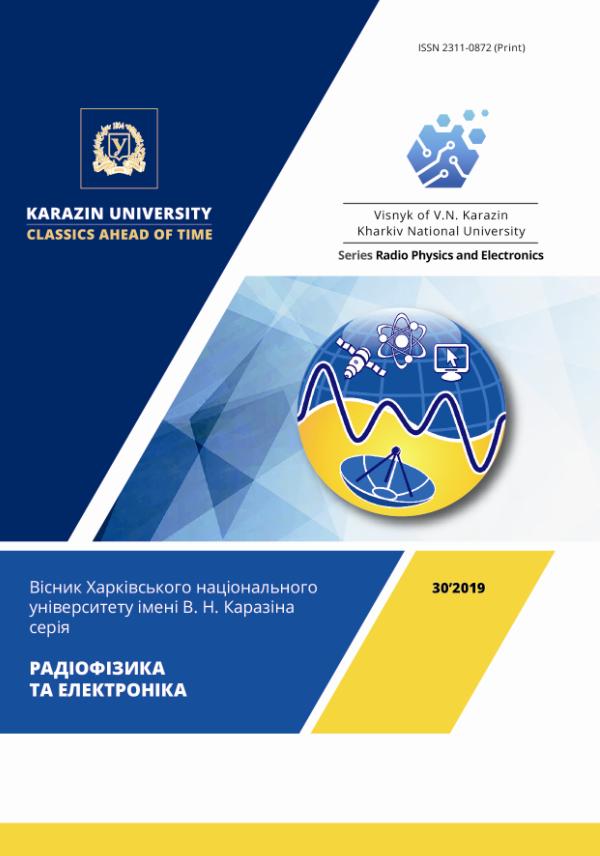SRS-lidar for environmental monitoring atmospheric surface layers
Abstract
Background: The development and implementation of new methods of environmental monitoring is an urgent problem due to the technogenic pollution of the Earth's biosphere. The remote control of the gas composition of the surface atmosphere layer in industrial zones of modern metropolis is important for determining penalties for enterprises whose emissions of pollutants exceed established norms.
Objectives: Development of an ecological Spontaneous Raman Scattering (SRS) lidar for monitoring the gas composition in the air basin of large megacities. Theoretical verification of the lidar effectiveness for problem solving.
Materials and methods: The developed lidar for environmental monitoring of the atmospheric surface layer is based on the SRS method which allows remote monitoring of the atmospheric gas composition at distances up to several kilometers with a fairly high resolution (up to 1 meter). The absolute concentration of detected polluting gases is determined by comparing the intensities of the satellite pollutant and nitrogen lines in the recorded SRS spectra.
Results: The choice of the SRS method for remote laser monitoring of the atmosphere ground layer in large industrial centers is substantiated. The block diagram and the main technical characteristics of the developed SRS lidar are presented. Preliminary estimates of the lidar efficiency for the environmental monitoring were carried out.
Conclusions: The simulation results have shown that the specifications of the SRS lidar allow detecting of following polluting gases: CO, NO2, SO2, CH4, H2S, C6H6 at distances up to 200 m with the maximum permissible concentration level. The simulation results were obtained when accumulation time varied from 10 s to 4 min. The specification of the SRS lidar allow its using for remote monitoring of air conditions in the cities and near industrial enterprises.
Downloads
References
Titar VP, Shpachenko OV. Golograficheskiy lidar dlya ekologicheskogo monitoringa atmosferyi [Holographic leader for environmental monitoring of the atmosphere]. Visnyk Kharkivskoho natsionalnoho universytetu im. V.N.Karazina. Radiofizyka ta elektronika. 2001;1(513):151-160. [in Russian].
Titar VP, Shpachenko OV. Polyarizatsionnyie golograficheskie metodyi lidarnogo kontrolya za sostoyaniem atmosferyi [Polarizing holographic methods for the lidar control of the atmosphere.]. Elektromagnitnyie yavleniya. 2001;2(1):111-117. [in Russian].
Titar VP, Shpachenko OV, Yartsev V I. Mobile holographic lidar. International Conference on Laser and Fiber-Optical Networks Modeling (LFNM); 2006 Jun 29 - Jul 1; Kharkiv, Ukraine. p. 187-190.
Titar VP, Shpachenko OV, Yartsev VI. Mobilnyiy golograficheskiy lidar [Mobile holographic leader]. Ekologiya i zdorove cheloveka. Ohrana vozdushnogo i vodnogo basseynov. Utilizatsiya othodov. Sb. nauch. statey 15-y Mezhdunar. nauch.-prakt. konf., g.Schelkino, AR Kryim, 2007 iyunya 4-8. Harkov, 2007. S. 254-258. [in Russian].
Titar VP, Shpachenko OV. Raman lidar for monitoring gas composition of the atmosphere ground layer. In: Proceeding of 8-th International Conference on Advanced Optoelectronics and Lasers (CAOL’2019); 2019 Sep 6-8. Sozopol, Bulgaria. p. 480-483.
Ismail S, Browell EV. Differential absorption lidar. Encyclopedia of Atmospheric Sciences. Edition 2. 2015. p. 277-288.
Gimmestad GG. Differential-absorption lidar for ozone and industrial emissions. Lidar: Range-Resolved Optical Remote Sensing of the Atmosphere; 2005. Springer. p. 187-212.
Ruzankina J, Elizarov V, Konopel’ko L, Zhevlakov A, Grishkanich A. Raman lidar with for geoecological monitoring. Journal of Physics: Conference Series; vol. 2018;1124:051036.
Wandinger U. Raman lidar in Lidar: Range-Resolved Optical Remote Sensing of the Atmosphere. 2005. Springer. p. 241-271.
Nishita T, Sirai T, Tadamura K, Nakamae E. Display of the earth taking into account atmospheric scattering. Proceedings of the 20th Annual Conference on Computer graphics and interactive techniques (SIGGRAPH '93); 1993 Aug 02-06. Anaheim, USA. p. 175-182.
Deyrmendzhan D. Rasseyanie elektromagnitnogo izlucheniya sfericheskimi polidispersnyimi chastitsami [Electromagnetic radiation scattering by spherical polydispersed particles]. Moskva: Mir. 1971. 165 s. [in Russian].
Gaytler V. Kvantovaya teoriya izlucheniya [Quantum theory of radiation]. Moskva: Izd-vo inostrannoy literaturyi, 1956. 491 s. [in Russian].
Blombergen N. Nelineynaya optika [Nonlinear optics]. Moskva: Mir, 1966. 424 s. [in Russian].
Bischel WK, Black G. Wavelength dependence of Raman scattering cross sections from 200-600 nm. In Eximer Lasers-1983, AIP Conference Proceedings; 1983; 100, p. 181-187.
Mezheris R. Lazernoe distantsionnoe zondirovanie [Laser remote sensing]. Moskva: Mir. 1987. 550 s. [in Russian].
Ocean FX. Miniature Spectrometer User Manual. https://oceanoptics.com/wp-content/uploads/Ocean-FX_Users_Guide_Ver_01.5.pdf
Hamamatsu Image Sensors. Selection guide. – June 2019. Avaible at: https://www.hamamatsu.com/resources/pdf/ssd/image_sensor_kmpd0002e.pdf
Razenkov IA. Aerozolnyiy lidar dlya nepreryivnyih atmosfernyih nablyudeniy [Aerosol lidar for continuous atmospheric observations]. Optika atmosferyi i okeana. 2013;26(1):52-63. [in Russian].
Hranychno dopustymi kontsentratsii (HDK) khimichnykh chynnykiv u povitri robochoi zony, zatverdzheni HDSL vid [Maximum permissible concentrations (MAC) of chemical agents in the air of the work area, approved by GDSL from] 17.07.2015. [in Russian]. http://normativ.ua/sanpin/tdoc27838.php
Sorohtin OG, Ushakov SA. Razvitie Zemli [Earth Development]. – Moskva: Izd-vo MGU. 2002. 506 s.




